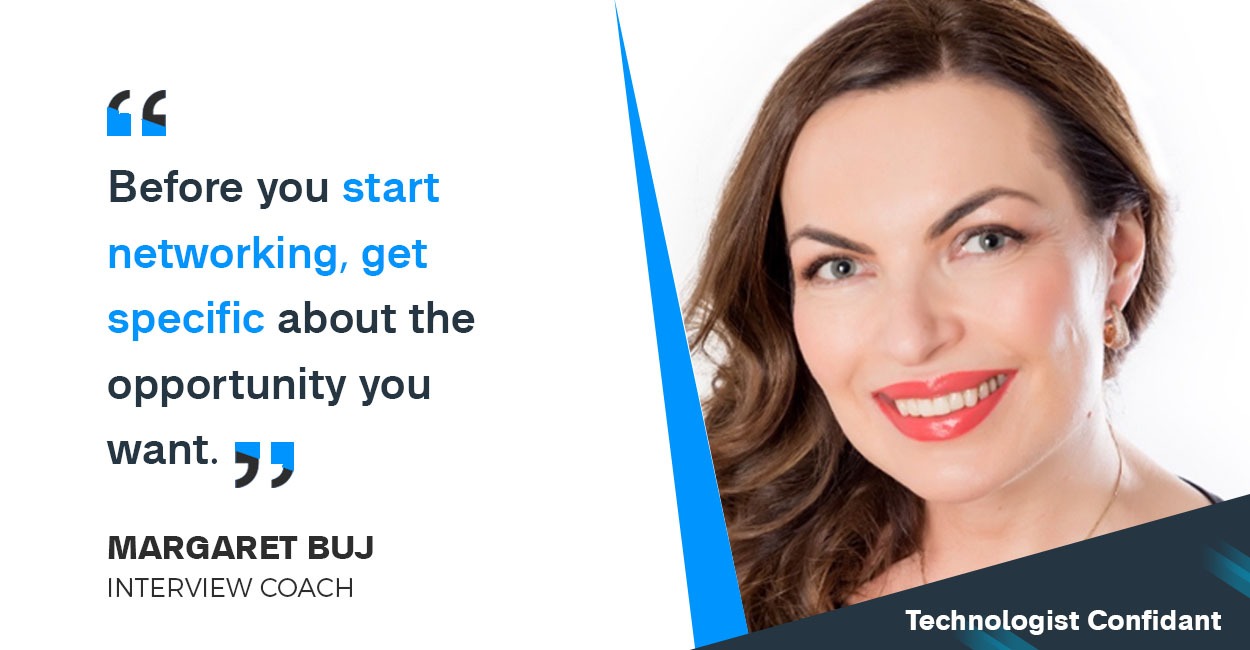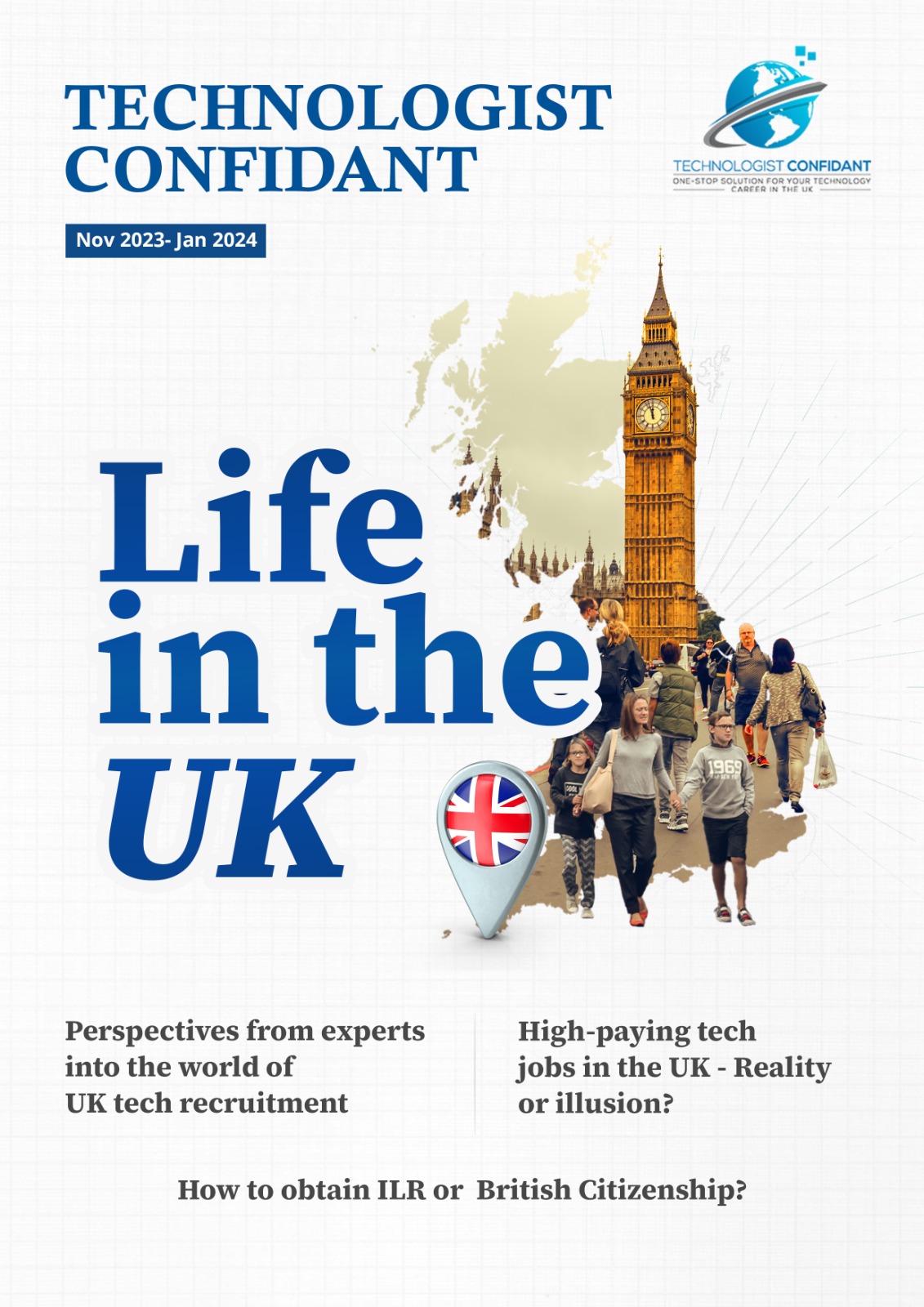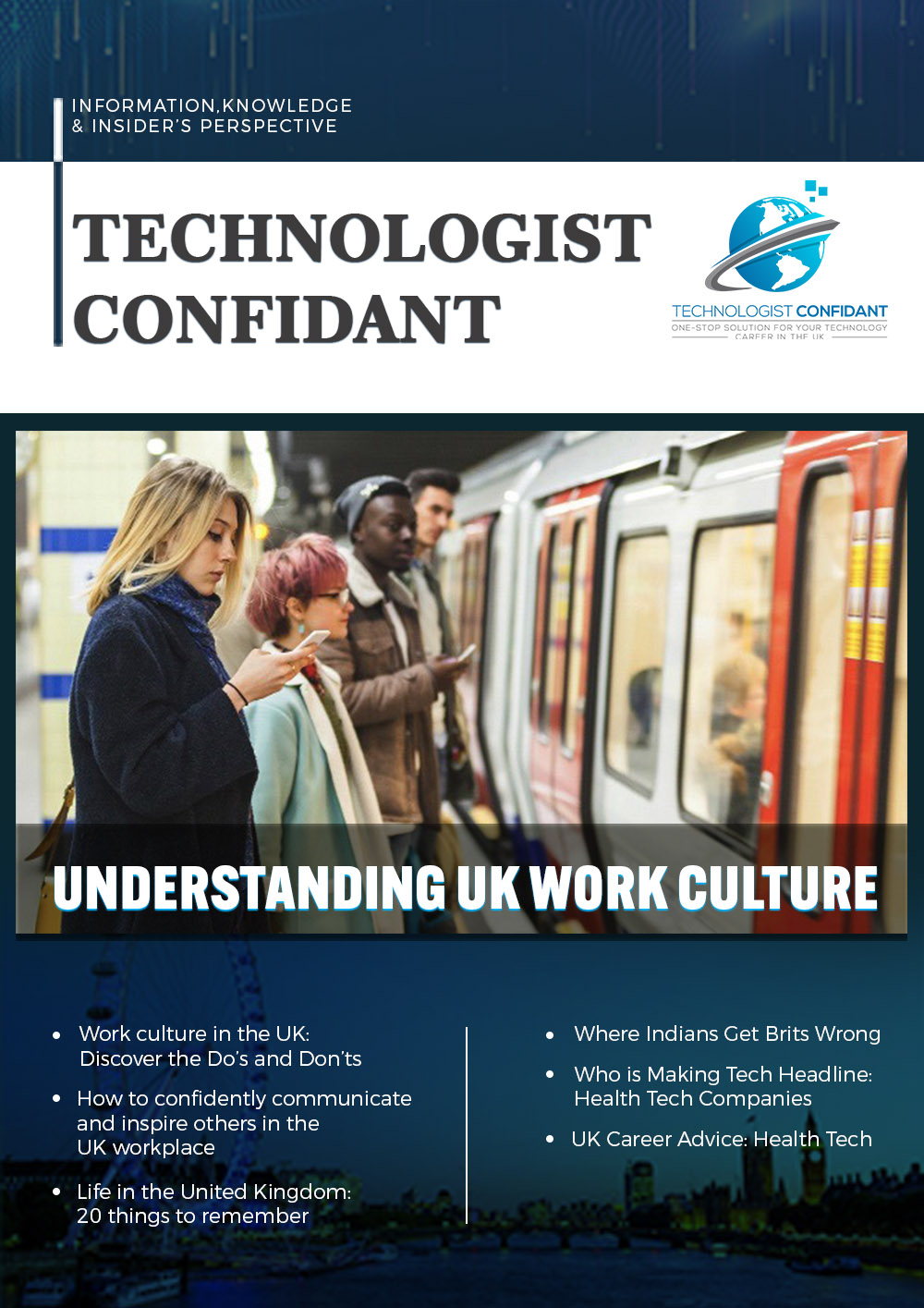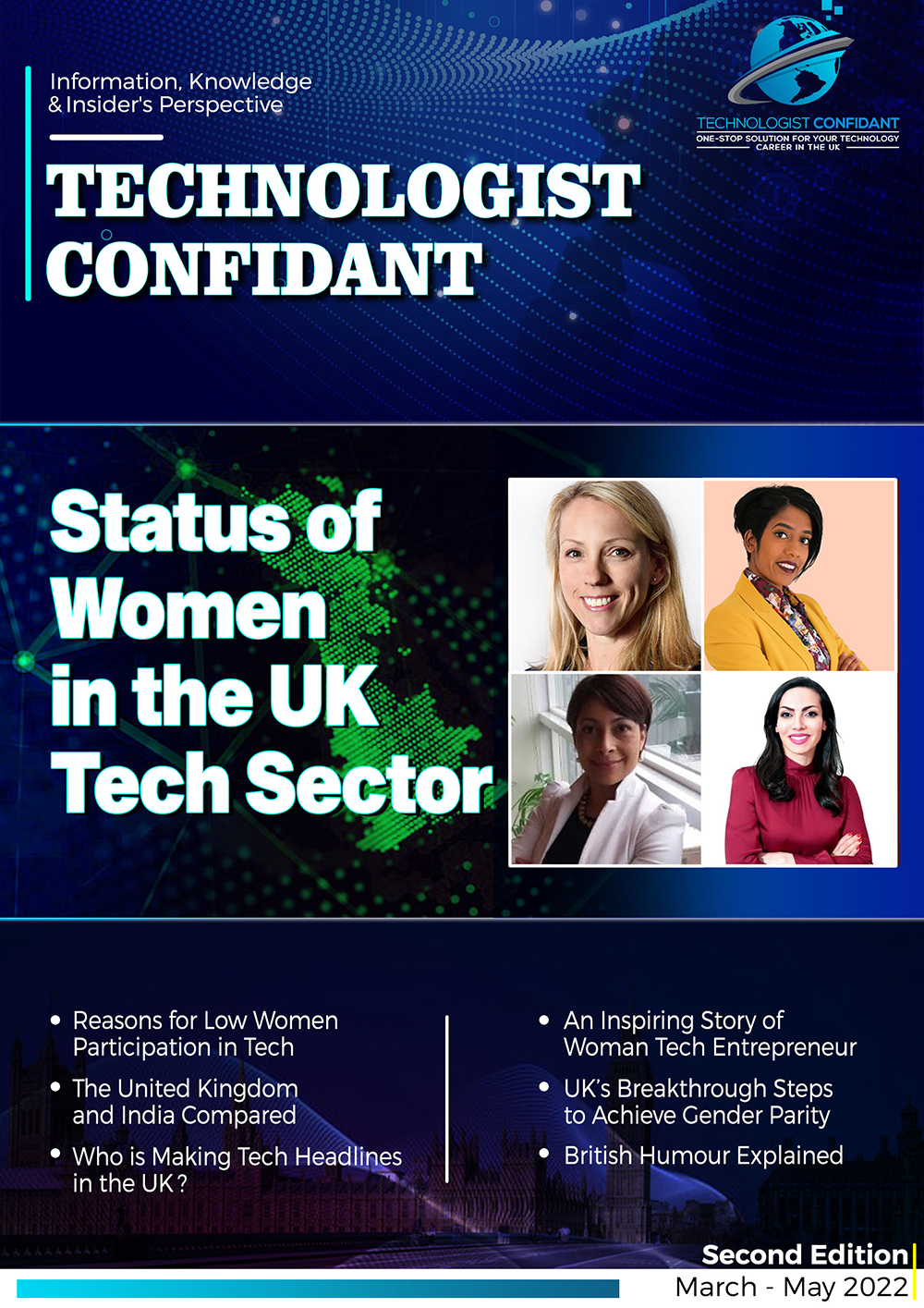Margaret Buj is an Interview Coach and a full-cycle recruiting, strategic sourcing and stakeholder management in matrix organisations in 16 years of working for global technology and e-commerce brands (including Cisco, Microsoft, VMware, Expedia), tech start-ups ( Yieldify, King, Typeform) and in consulting (Avanade). She has assisted hundreds of professionals in Europe and the United States in obtaining the jobs and promotions they want.
Margaret has 13 years of experience recruiting for roles at all levels in Europe and the United States, primarily in the technology and e-commerce sectors. She has been published in Cosmopolitan magazine, interviewed for the Financial Times and Management Today, and written two e-books on job search and interviewing success.
Technologist Confidant sat down with Margaret Buj to gain an insider’s perspective on job prospects in the United Kingdom tech sector, and learn more about the job search techniques that work and the common mistakes one should avoid making while making a job application.
TC: What does the UK sector look like regarding job prospects?
Margaret:The UK is a hotbed of tech talent, with opportunities nationwide. Digital jobs and skills are underpinning the growth of the UK's thriving tech sector, which in turn is creating high-productivity jobs at scale.
According to TechNation: there were over 2mn vacancies for tech roles between May 2021 and 2022, from a total of 14.85mn vacancies across the economy as a whole, which includes part-time and contract work. Nearly 5mn people now work in the digital tech economy, up from 2.18mn in 2011. On average, tech salaries are nearly 80% higher than salaries for non-tech jobs in the UK, at £62,000 compared to £35,000 as of Q1 2022. London is the 2nd best place to live and work globally in tech based on salary versus cost of living data. Almost 80% of advertised tech roles are at the senior level, potentially obstructing those at an earlier stage in their career from getting relevant experience in tech. The demand for a Product Manager in tech has grown by over 8x in the last year, showing the burgeoning significance of non-technical roles in the sector. Software developer vacancies continue to occupy the top spot for employer demand, but roles like Consultant, Business Analyst and Product Manager form a significant proportion of hired roles.
COVID-19 has accelerated the expansion of e-commerce, online education, digital health and remote work, all out of necessity. This ‘new normal’ has normalised remote working and resulted in adopting technologies to support virtual collaboration, communication, and working from a distance. I talk to many tech professionals, primarily developers, who would only consider a fully remote role if changing jobs.
With the advent of remote hiring, recruiters now have access to a global talent pool of fresh, up-skilled developers from all corners of the globe. The widening of the talent pool is both an opportunity and a challenge for us recruiters, and many companies are still figuring out how to navigate the global talent landscape.
Top-tier candidates have their pick of the jobs on the market. “Perks” and “benefits” that were once considered frivolous — like workplace culture and employers that respect their employees’ development goals and work/life balance — have now become critical decision-making factors. Recent research from Glassdoor finds that 77% of candidates (from the US, UK, France, and Germany) would consider a company’s culture before applying there, and 56% of respondents say culture is more important than salary when it comes to job satisfaction.
TC: What is your first advice for international talent looking for a UK job?
Margaret: There are a few things I’d recommend.
Firstly, building a professional social presence online is essential, as most employers use LinkedIn, in particular, for recruitment and research. Your LinkedIn profile needs to be not only completed but only optimised for job search, especially in terms of having a benefit-driven headline and a vital summary section. I’ve recorded a webinar on how to do that here: https://www.linkedin.com/pulse/how-optimise-your-linkedin-profile-job-search-margaret-buj/
You should also network with other tech professionals. Join online webinars, meetups, or events in your area to hear first-hand from people in the field what roles look like in the real world so that you can get out there and network. The Eventbrite website, London Tech Meetups website and the Meet Up website are all excellent places to start.
It’s important to remember that networking is always a two-way process. Do not approach it solely as what you can get from it but as what you can offer others. If you’re in any networking situation, don’t just talk about yourself; listen to others, hear about their experiences, and learn from them.
It’s not just about you; you may meet people that could be helpful to colleagues or friends. Put them in touch (with their permission) –this can be mutually beneficial networking. As we do so much online these days, remember to maximise your online networking skills and don’t wait until you need help to start nurturing your network.
Review your networks and make the most of existing contacts. Keep updated. Do a checklist of what groups you already belong to and those you aim to join. Ensure your LinkedIn profile is up to date. Share with your colleagues and friends and ask for/give recommendations. Boost your social media presence generally through other platforms e.g. Twitter. You may find employment and business opportunities through ‘remote’ colleagues.
You’d want to create an achievement-driven CV/resume and then tailor it to specific vacancies. In general, we recruiters look for whether your work experience and skills are relevant to what the company needs, what results you’ve had and what impact you’ve had — tangible achievements are essential to make yourself stand out. For example, a Software Engineer could say:
Created, maintained, and monitored the entire cloud infrastructure of Company X while working on 20+ microservices for 5 clients.
Another example is a Project Manager — instead of saying you led projects, it would be better to quantify this experience, for example:
Over the past 5 years, I successfully completed 6 projects from start to finish, generating a total of $600,000 in revenue.
You’ll need to tailor your CV to each particular job that you apply for, so it’s vital that the job titles and the responsibilities you include in your CV are relevant (if not a direct match) for the job on offer. Although you need to clarify your remit, your CV must offer more than just a list of your responsibilities.
Your CV will be scanned for the right kind of experience. Ensure your expertise, whether six months in one role or four years in another, is consistent and relevant to the job you’re applying for. Be clear about where you added value and your exact contribution to any high-profile project.
Ensure you include instantly recognisable keywords throughout your CV. Avoid excessive jargon and be mindful that the person reading it may not be a technical or industry expert. However, they will know what to look out for. Finally, your CV should be easy to read, with no spelling/grammar mistakes and relevant language.
TC: How do you recommend that IT professionals prepare their job search strategy?
Margaret: Firstly, get clear on what specific role you’re looking for and create a list of at least 20 target companies. In my experience, UK companies often look for specialists in a specific area more than generalists - although this varies enormously from company to company. Before you start networking, however, you need to get specific about the opportunity you want.
Example, Too broad:
- I want a creative, collaborative role doing meaningful work.
- I want something in sales, marketing, or customer support in an innovative industry.
Just right:
- I want to work as a frontend software developer in a scale-up (300-500 people ideally) in a fully remote role.
Then create a list of professionals you have worked with that you have a good relationship with. Write a semi-customised email for each person. Remind them how you’ve met or when you last spoke, mention what type of a role you’re looking for and ask if there is anyone in that space they could connect you with. You need to customise your email - people don’t respond if they think it’s a mass email; you need to be specific about the opportunity you’re looking for -this will trigger their memory - and then ask for an introduction.
- Create an achievement-driven resume
- Find out how to approach a hiring manager on LinkedIn (don’t just rely on job boards — be proactive):
- Try to get referred for a job
- And find out how to optimise your LinkedIn profile for job search:
TC: What are candidates' most common mistakes that lead to rejection?
Margaret: At the application stage, it’s typically unclear what job you’re looking for, which results in applying for many roles you’re not necessarily qualified for. It’s better to send fewer applications but fully tailored to each vacancy rather than applying for many positions that you’re only vaguely qualified for.
Also, just relying on job boards is a big mistake - you need to be a lot more proactive; that’s why I always recommend utilising your network, creating a list of target companies, and then trying to conduct informational interviews with people working for these organisations.
During interviews, the common mistakes are to do with not backing up your answers with examples - talking about what you’ve done but not focusing enough on the results and impact of your work. Your answers need to be detailed enough so the interviewer understands the context, your action and your impact, but also not too short and not too long - you shouldn’t spend 10 minutes answering one question. Not asking any questions is also a mistake.
TC: Can you share the general hiring procedure of a UK employer?
Margaret: It varies from company to company - in the companies I’ve worked for, the recruiter will typically do the first screening call, followed by 3-6 interviews, depending on the type of role and seniority. Interviews are typically a mixture of general, technical and competency-based interview questions.
TC: What are the most important elements to consider while applying to a British organisation?
Margaret: Like with any organisation, it's always good to follow up with a recruiter or a hiring manager after your application, but your situation will be more challenging if you need visa sponsorship.
In order to apply for most work visas, you'll usually need to gain a job offer with sponsorship from an employer in the UK first. This employer must also be approved by the Home Office and be on its list of eligible employers.
While some companies sponsor visas, they'll typically only sponsor them for senior candidates or those with skills that are hard to find in the UK market. Getting sponsorship isn't easy, and it won't be possible in all roles. Getting visa sponsorship is also not just about whether you're qualified.
The employer has to demonstrate that the job can't be filled locally, so it doesn't matter if you're super qualified if the job advertisement draws 20 also-qualified Britons. The Tier 2 visa is intended to help the UK supplement its labour force as it needs to; it's not a favour they're doing for anyone.
Additionally, the process for a company to get the licence it needs to provide Tier 2 sponsorship is pretty stringent. The licence must be renewed every few years, and the company must advertise roles a certain number of times over a certain number of days (i.e. they have to prove they can't be filled locally before they can sponsor a Tier 2 for the role), and there's a lot of documentation that's required. It costs them money to get the licence, on top of the costs for individual certificates of sponsorship, and on top of the actual cost of the Tier 2 visas themselves and any added costs for dependents. Companies need the licence to get the sponsorship certificates, and the applicants, in turn, require a sponsorship certificate to qualify for the actual Tier 2 visa.
With that much red-tape rigmarole and costs, companies will not be too open-handed with Tier 2 sponsorships, assuming their roles meet all the other requirements. For many places I've worked in, it's more of a headache than it's worth, and/or they save the effort for high-level and/or speciality roles where it's worth the additional investment in recruiting exceptional and/or experienced talent.
TC: Any interview advice?
Margaret: This is a vast topic, and I cover it in detail in my online course, which teaches tech professionals how to get more interviews and job offers, even in a competitive job market. You’ll learn the best way to research the company and the interviewer and to ensure the job is the right cultural fit for you, how to answer the most common interview questions and what questions to ask the interviewer.
But in general, the steps are to research the industry and company, clarify your “selling points” and the reasons you want the job, anticipate the interviewer’s concerns and reservations, and prepare for common interview questions. Prepare your examples using STAR format. Prepare questions for the interviewer and practice, practice, practice. It’s also important to know your value and the going rate for your position in your specific industry and geographic area.
You can do this by doing an online search on sites such as Payscale or Glassdoor , or by asking others in your field (ideally both men and women, to avoid falling victim to the gender pay gap). Talk to recruiters as well, as they’ll know what a range for someone with your experience is. Always ask for a little more than what you’re looking for to have room for negotiation.






